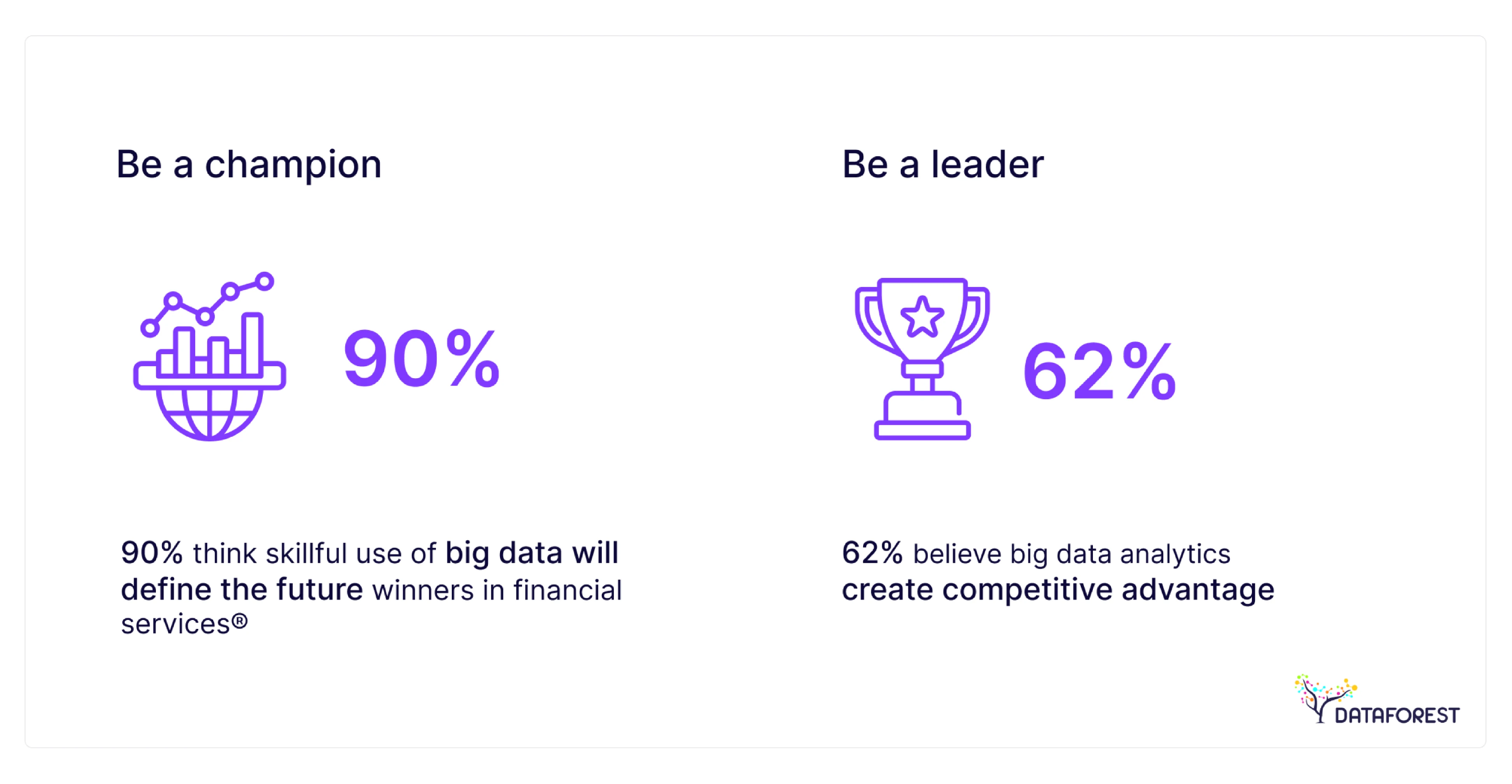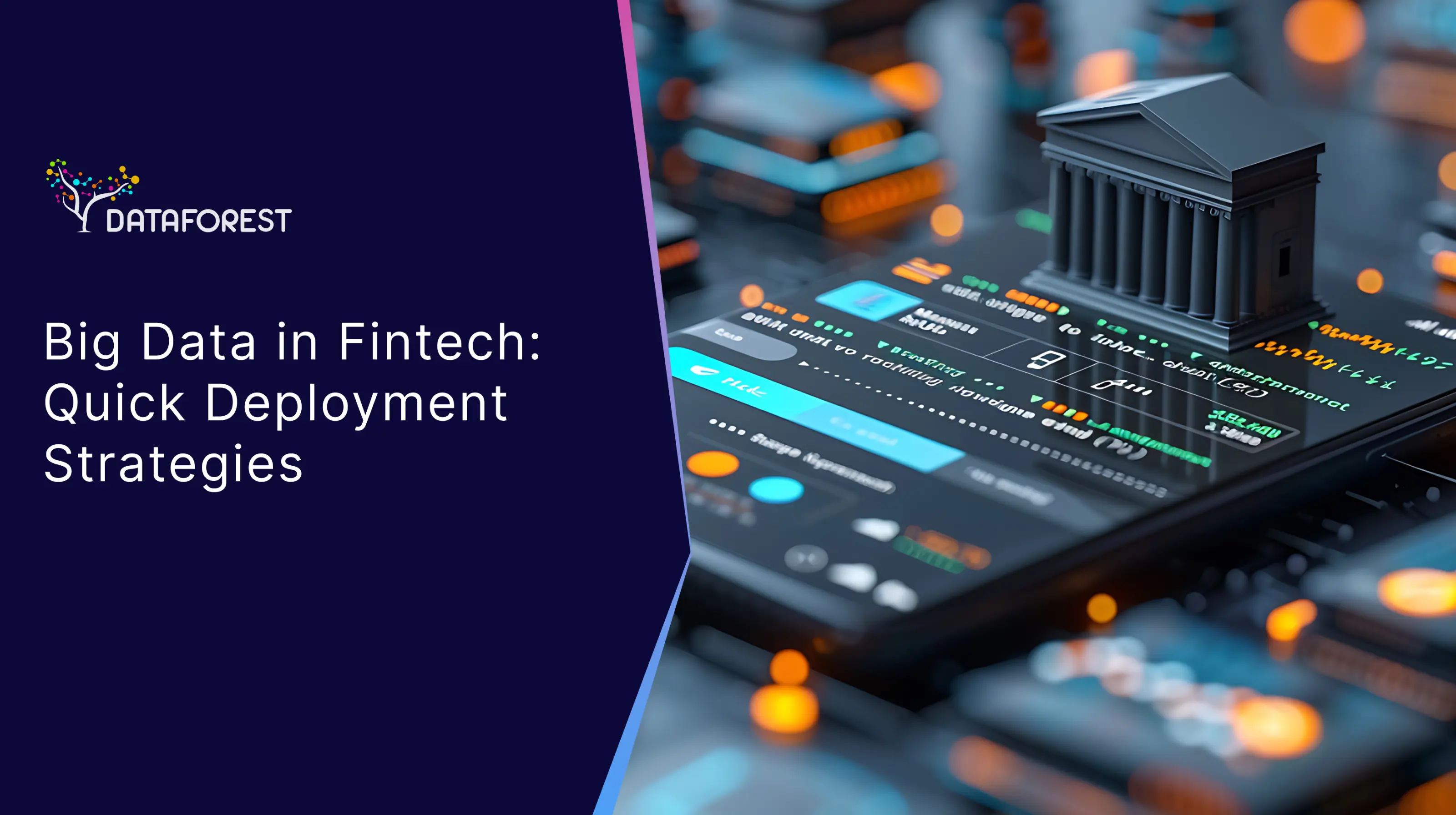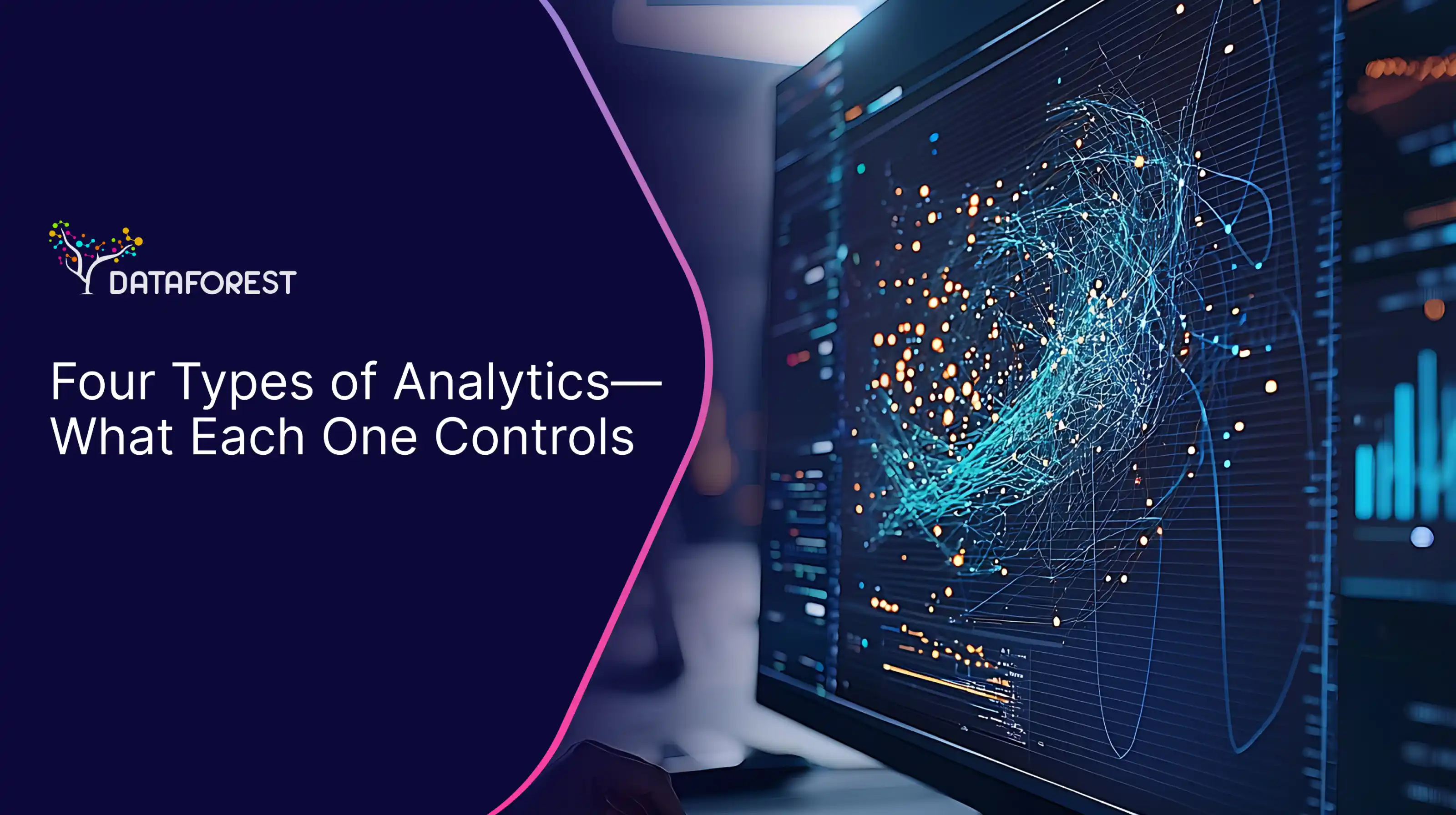Charting the Course: The Strategic Imperative of Data-Driven Fintech
In today's digital economy, data is the core asset, especially for the fintech industry. We've shifted from merely processing transactions to leveraging every interaction for strategic insight. According to McKinsey, fintech revenues are projected to hit $1.5 trillion by 2030, growing nearly three times faster than traditional banking. This growth is driven by the intelligent application of big data.
Enterprises that fail to harness their data risk obsolescence. As Boston Consulting Group (BCG) noted, financial institutions must "act like digital giants before digital giants act like banks." This means embedding advanced data analytics deep into the organization. The challenge is deploying these capabilities quickly without getting mired in lengthy, high-cost projects. This guide offers a blueprint for the rapid, scalable implementation of big data solutions, turning raw information into measurable, strategic value for the finance industry.

Business Impact — How Big Data Drives Value in Fintech
The world of analytics fintech is where the real value gets created. Fintechs that put advanced financial analytics to work are fundamentally changing their operations, finding new efficiencies, and creating new ways to make money.
Real-Time Decision Making
In today's fast-moving financial world, decisions must be instant. With real-time analytics, firms can digest live data from the market, payment systems, and news, letting them execute trades, tweak risk models, and manage liquidity on the fly—critical functions for modern investment platforms.
Enhanced Customer Personalization
By digging into the rich consumer insights from mobile payments, app usage, and even public social media trends, fintechs can deliver incredibly personalized advice and products. This isn't just a gimmick; it builds serious customer loyalty and value by creating superior customer experiences. Mastering this approach begins with a deep dive into hyper-personalization in finance.
Improved Fraud Detection and Risk Management
Financial services are constantly under attack from fraud. Here, big data and machine learning act as a powerful defense, scanning millions of transactions as they happen. This helps companies identify the subtle signs of trouble that legacy systems miss. The ACFE found that this kind of data monitoring cuts fraud losses by 52%. That proactive approach to fraud detection and cybersecurity doesn't just protect the bottom line; it safeguards a company's reputation, making it a must-have for things like modern chargeback management platforms.
Predictive Analytics for Lending and Investment
What if you could assess risk assessment more accurately? That's what predictive modeling is doing for lending and investment. Through sophisticated data modeling, lenders are now looking beyond simple credit scores, analyzing thousands of other data points to get a much clearer view of who they're lending to. This approach enables companies to achieve safer lending, often to people who were previously overlooked. You see this kind of AI-powered thinking at the heart of tools for investment scoring.
Compliance and Regulatory Efficiency
Data governance is non-negotiable in a world of complex privacy regulations. Big data solutions automate compliance by creating auditable data trails and monitoring for AML red flags, reducing risk and freeing up human resources for strategic work.
Quick Deployment Strategy — What Big Business Needs to Know
To stay competitive, your deployment strategy has to be fast. That means being agile, having a laser-sharp focus, and making smart use of the tech you already have.
Key Factors for Fast Implementation
What are the key factors for a quick rollout? First, you need backing from the top. Then, you need a tightly defined scope and an agile way of working. My advice: pick one problem with high impact—fraud detection is a classic example—and solve it first. Prove the value quickly before you try to change the whole company.
Choosing the Right Data Infrastructure (Cloud vs Hybrid vs On-Prem)
Your data architecture is foundational.
- On-Premise: Offers maximum control but requires high capital expenditure and lacks elasticity.
- Cloud Computing: The standard choice for fintechs, offering unmatched scalability and a pay-as-you-go model. A 2025 O'Reilly report notes that 47% of enterprises now have a cloud-first strategy.
- Hybrid: The optimal path for established institutions, allowing them to keep sensitive data on-premise while leveraging the cloud's powerful analytics.
For most, a cloud or hybrid approach provides the necessary scalable infrastructure.
Leveraging Pre-Built Analytics Platforms and APIs
Don't reinvent the wheel. Use pre-built software solutions and platforms for analytics and ML. Thanks to open banking and a world of APIs, pulling in data from third-party data sources has never been quicker. If you bring in experts for data integration and ETL services, you can cut months from your project plan.
Aligning Data Projects with Business Goals
Every big data project must solve a clear business problem. By aligning IT with tangible objectives, organizations ensure their investments generate real ROI.
Practical Solutions for Scalable Implementation
A successful deployment must scale. This requires a focus on automation, modern architecture, and the right mix of talent.
Data Pipeline Automation
Think about your data pipeline. You need an automated system for data cleansing, data transforming, and getting it into centralized data lakes or warehouses. If you automate this, your analysts and models always have the best, most current data. Using tools designed for workflow automation can really speed things up.
Integrating Legacy Systems with Modern Data Architecture
And what about those old legacy systems? They're a huge headache for established companies. The smart move is a gradual data migration strategy that uses APIs to connect the old with the new. This lets you tap into that valuable old data without the massive risk of a full replacement, a cornerstone of any real digital transformation in banking.
Using Machine Learning-as-a-Service (MLaaS)
Cloud providers offer powerful MLaaS platforms, democratizing AI and allowing fintechs to build intelligent systems without a massive in-house team. Exploring big data and advanced analytics services provides a clear path for leveraging these platforms.
Building Cross-Functional Data Teams
Silos will kill your agility. It's that simple. Successful data projects run on teams that mix data scientists, engineers, and business leaders—all sharing responsibility for the outcome. Getting that mix of skills on one team of experts is how you get results.
Partnering with Specialized Vendors
But what if you need to move fast? That's when partnering with a specialized vendor becomes a critical shortcut for companies in the finance industry.
Pitfalls to Avoid During Deployment
Many big data projects fail due to strategic missteps. Awareness is the first step to avoidance.
- Misalignment Between IT and Business: Ensure constant communication and shared KPIs.
- Underestimating Data Governance and Security: Bake robust security and compliance with privacy regulations into the architecture from day one.
- Overengineering the First Phase: Start with a Minimum Viable Product (MVP) that solves one problem, then iterate.
- Ignoring Scalability Early On: Design a scalable infrastructure from the outset to handle future growth.
Measuring ROI — Metrics That Matter for Big Data in Fintech
To justify investment, you must quantify success. Forrester Research reports an average ROI of 250-500% in the first year for predictive analytics. Track these key metrics:
- Operational Efficiency: Cost savings from automation.
- Risk Reduction: Lower fraud loss rates and loan defaults.
- Customer Value: Higher customer lifetime value (LTV) and lower acquisition cost (CAC).
- Revenue Growth: Increased conversion rates from personalized offers.
Effective data visualization services can translate these data-driven decisions into compelling business cases.
Future-Proofing Your Big Data Strategy
A successful data fintech strategy requires an ongoing commitment to innovation.
Investing in Talent and Training
The best tools need skilled people. Continuous investment in training and fostering a data-literate culture is critical for staying ahead.
Preparing for AI and Autonomous Finance
Big data is the foundation for AI. With 58% of finance functions already using AI (Gartner), the future is moving toward autonomous finance. The rise of Generative AI in finance and AI agents in loan processes confirms this trend.
Embracing Open Banking and Interoperability
The future of finance is an interconnected ecosystem. Embracing open banking via API integration, as seen in platforms like the all-in-one financial platform Redleo, is key to long-term relevance.
From Insight to Impact: Your Next Strategic Move
Deploying big data in fintech is a matter of how quickly and how effectively. By focusing on high-impact use cases, choosing a scalable data architecture, and fostering a culture of data-driven decisions, companies can rapidly gain a decisive competitive advantage. The tools and strategies for a quick, scalable deployment are within reach.
Is your data working as hard as it could be? Let's make it your most valuable asset. Contact us to discuss how our enterprise solutions can accelerate your journey.
FAQ
What are the first steps to implement Big Data in a fintech organization?
Start by identifying a single, high-value business problem that can be solved with data (e.g., reducing customer churn or improving fraud detection). Secure executive sponsorship, define clear success metrics, and assemble a small, cross-functional team. Begin with an MVP to demonstrate value quickly before scaling up.
Which Big Data tools and platforms are most commonly used in fintech?
The fintech stack typically includes cloud platforms like AWS, Google Cloud, and Azure for scalable infrastructure; data processing engines like Apache Spark; data warehousing solutions like Snowflake or BigQuery; and business intelligence tools like Tableau or Power BI for visualization. Python and R are the dominant languages for data science and model development.
What are the biggest challenges when deploying Big Data solutions in financial services?
The top challenges are ensuring data security and compliance with complex regulations (like GDPR, PCI-DSS), integrating modern data platforms with legacy banking systems, sourcing and retaining skilled data science talent, and ensuring clear alignment between technical teams and business objectives to generate tangible ROI. Effective data integration is often the most critical technical hurdle.
Is cloud or on-premise better for Big Data in regulated fintech environments?
While on-premise offers maximum control, a hybrid or fully cloud approach is now standard for most fintechs because it's scalable and more cost-effective. The big cloud companies provide all the compliance paperwork and secure environments—like private clouds—that financial regulators demand. This makes the cloud a solid, and often better, choice.
Can Big Data solutions be integrated with legacy banking systems?
Absolutely. While challenging, it's a common requirement. Integration is typically achieved using a combination of APIs, middleware, and modern ETL (Extract, Transform, Load) processes that pull data from legacy mainframes or databases into a modern data lake or warehouse where it can be analyzed using cloud-based tools.
When is it better to partner with external vendors instead of building in-house?
Partnering is often better when speed-to-market is critical, when you lack specialized in-house expertise (e.g., in advanced machine learning or specific regulatory compliance), or for a one-time project like a major data migration. A vendor can provide immediate access to experts and proven technologies, reducing risk and accelerating deployment. The result is that your own team is freed up to concentrate on what they do best: building the core of your business.
How do big data and AI work together in fintech?
Big data is the fuel, and AI is the engine. Big data provides the vast, high-quality datasets necessary to train and validate AI and machine learning models. In turn, AI algorithms are what analyze this data to perform tasks like detecting complex fraud patterns, making predictive lending decisions, providing personalized financial advice, and automating processes—tasks that are impossible at scale with data alone.






%20(1).webp)















